FIN701 Quiz 5 Solution: Comprehensive Finance Exam Analysis
VerifiedAdded on 2022/07/28
|6
|1156
|14
Quiz and Exam
AI Summary
This document presents the solutions to a finance quiz (Quiz 5) from a FIN701 course, covering a range of financial concepts. The solutions include explanations for each question, addressing topics such as the ranking of securities by volatility, the calculation of weighted average floatation costs, earnings per share after stock repurchase, the impact of risk on project evaluation, the optimal capital structure and WACC, portfolio beta calculations, the benefits of diversification, arithmetic and geometric mean calculations, the effects of stock dividends, holding period return, systematic and unsystematic risk, the components of capital structure, the valuation of levered and unlevered firms, the impact of debt on earnings per share, WACC calculation, Modigliani-Miller propositions, expected return calculations under different economic scenarios, and the impact of interest rate changes on systematic risk. The solutions provide detailed calculations and reasoning to help students understand and master the financial concepts tested in the quiz.
1 out of 6

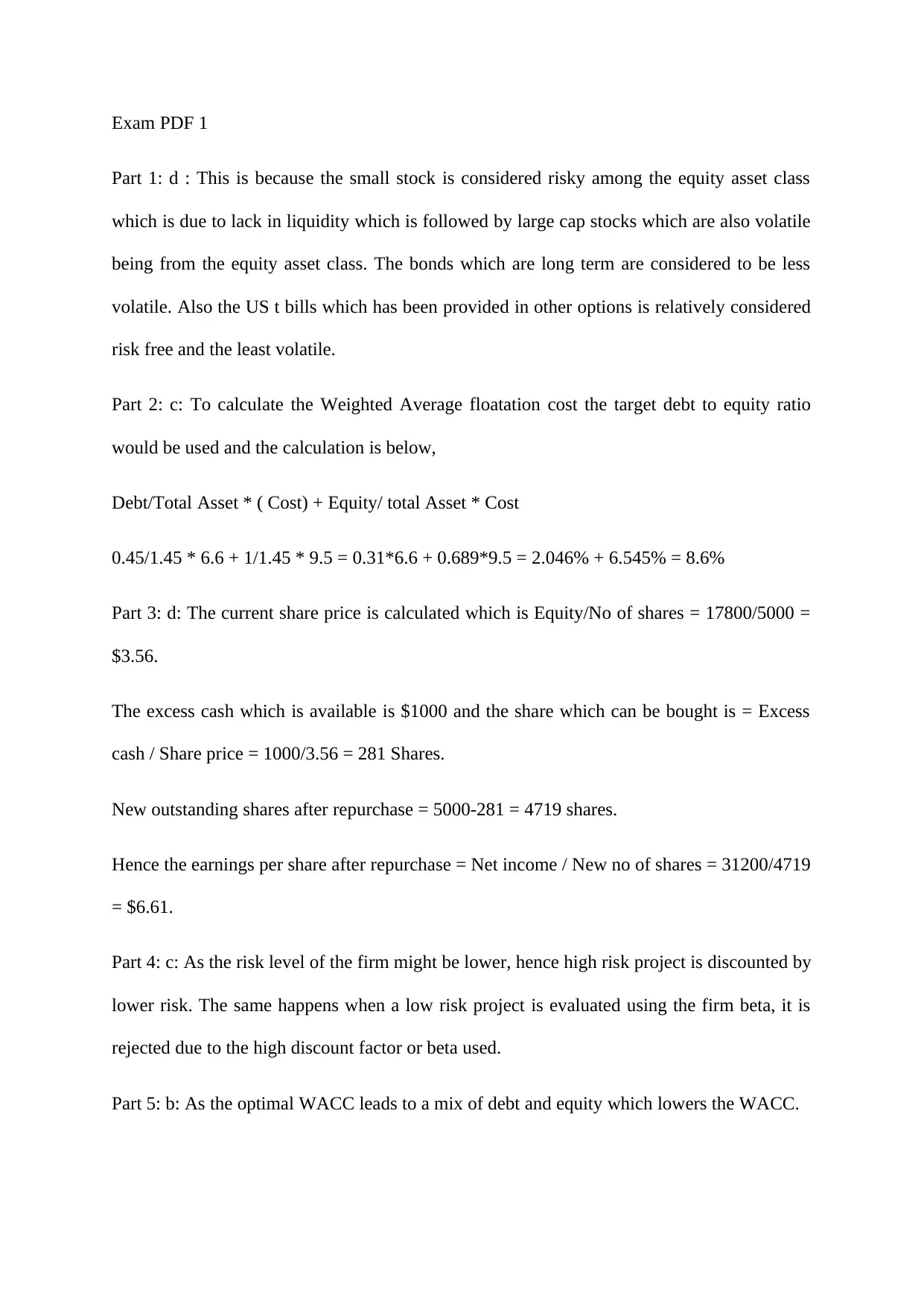
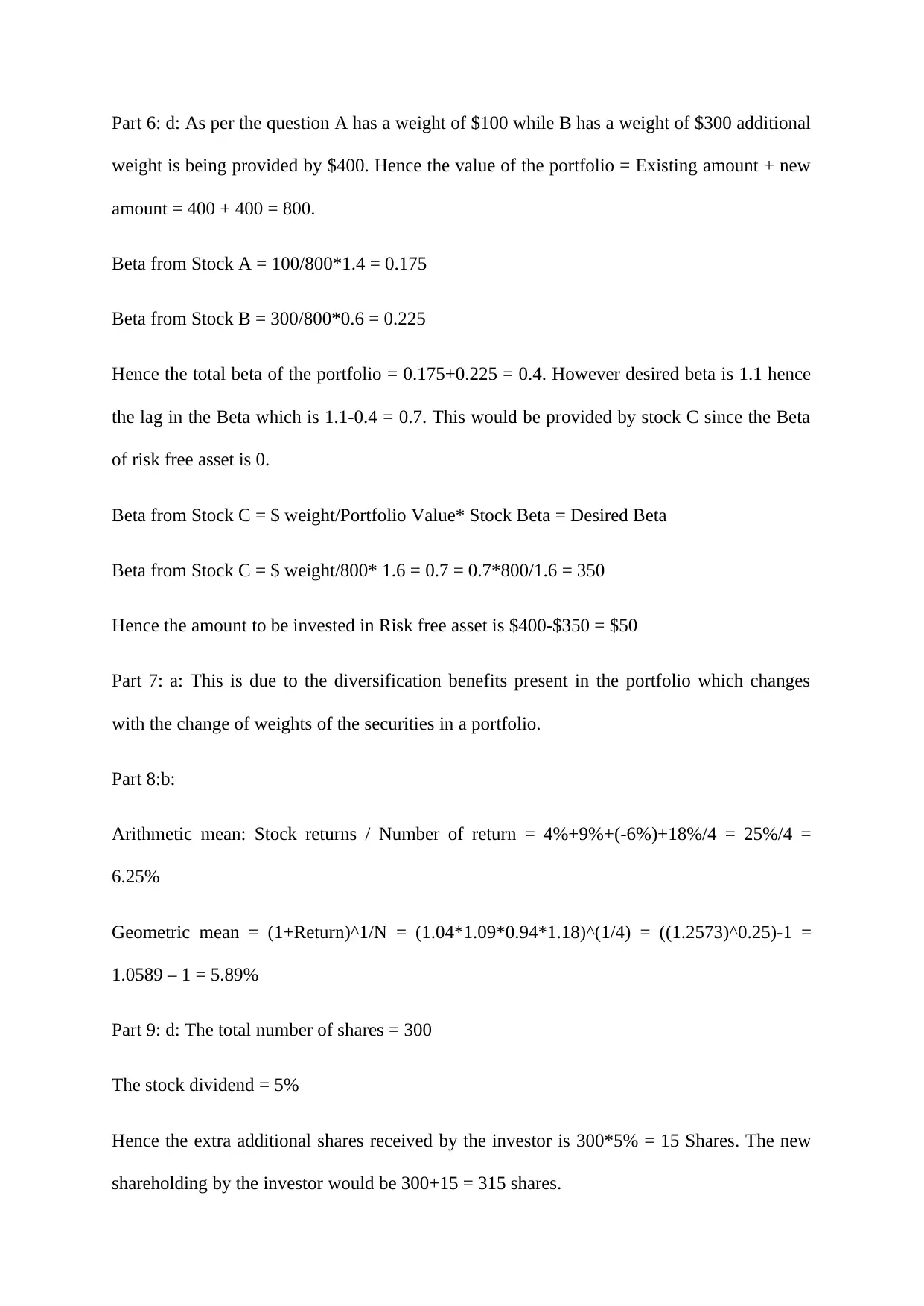

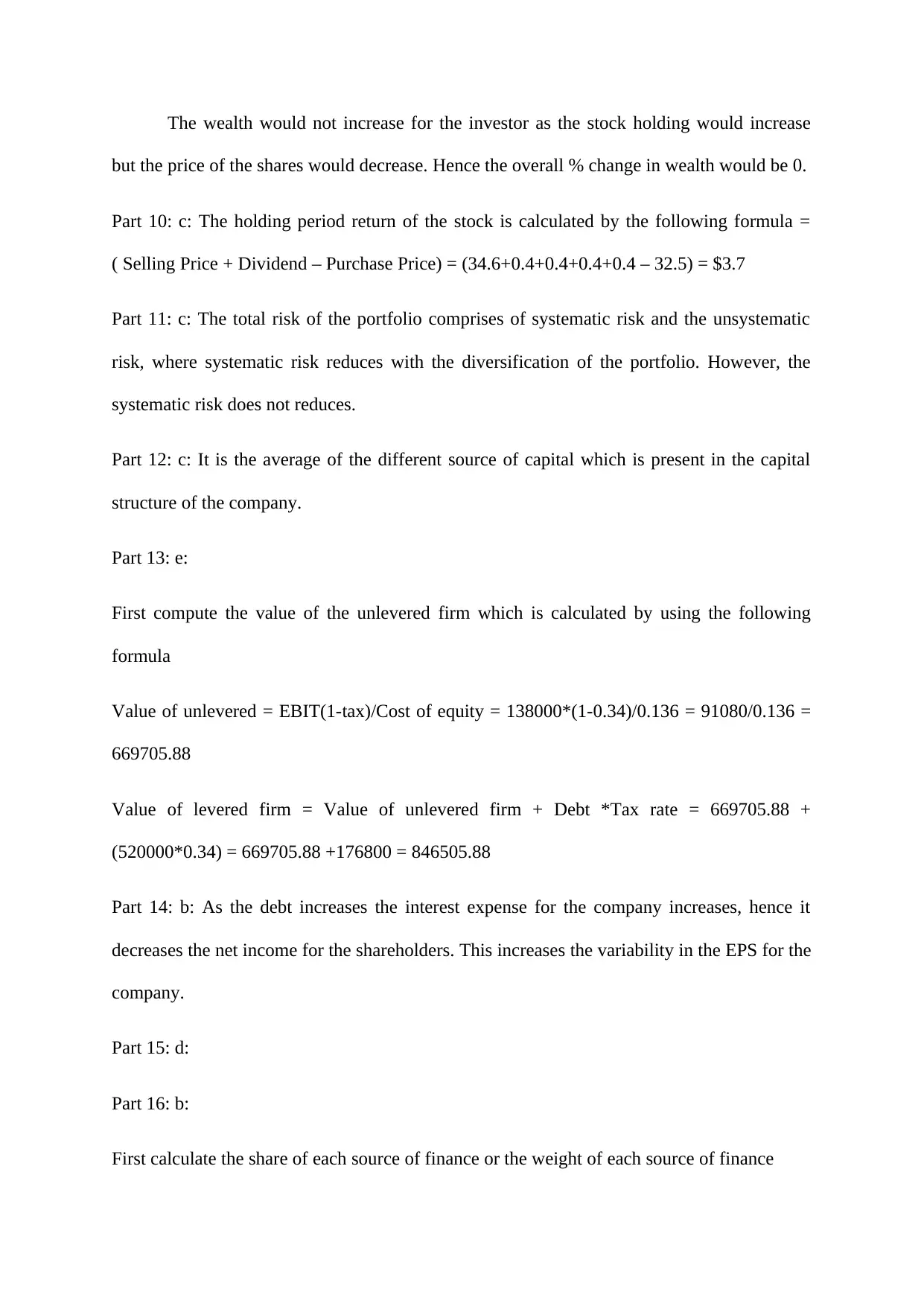
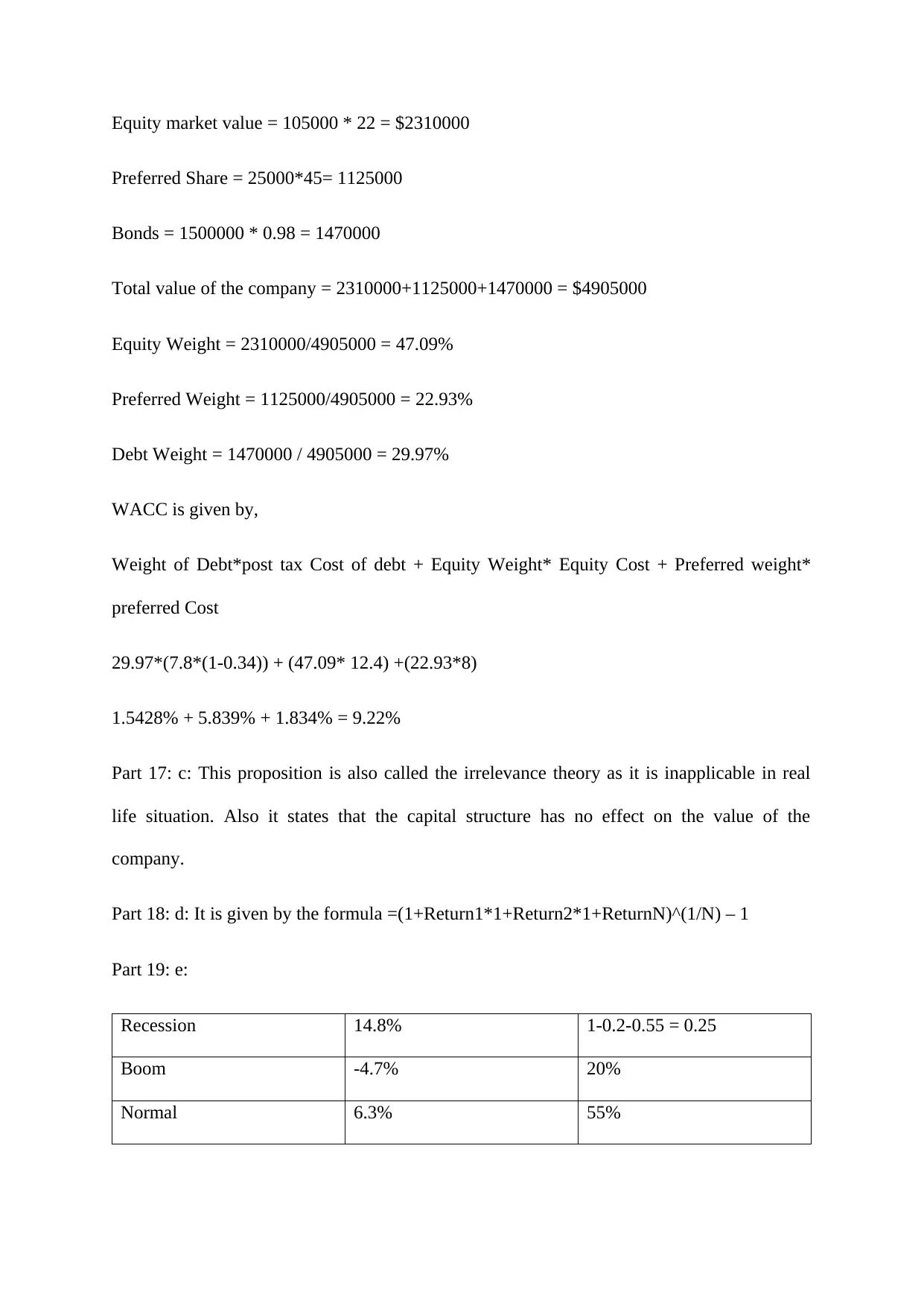
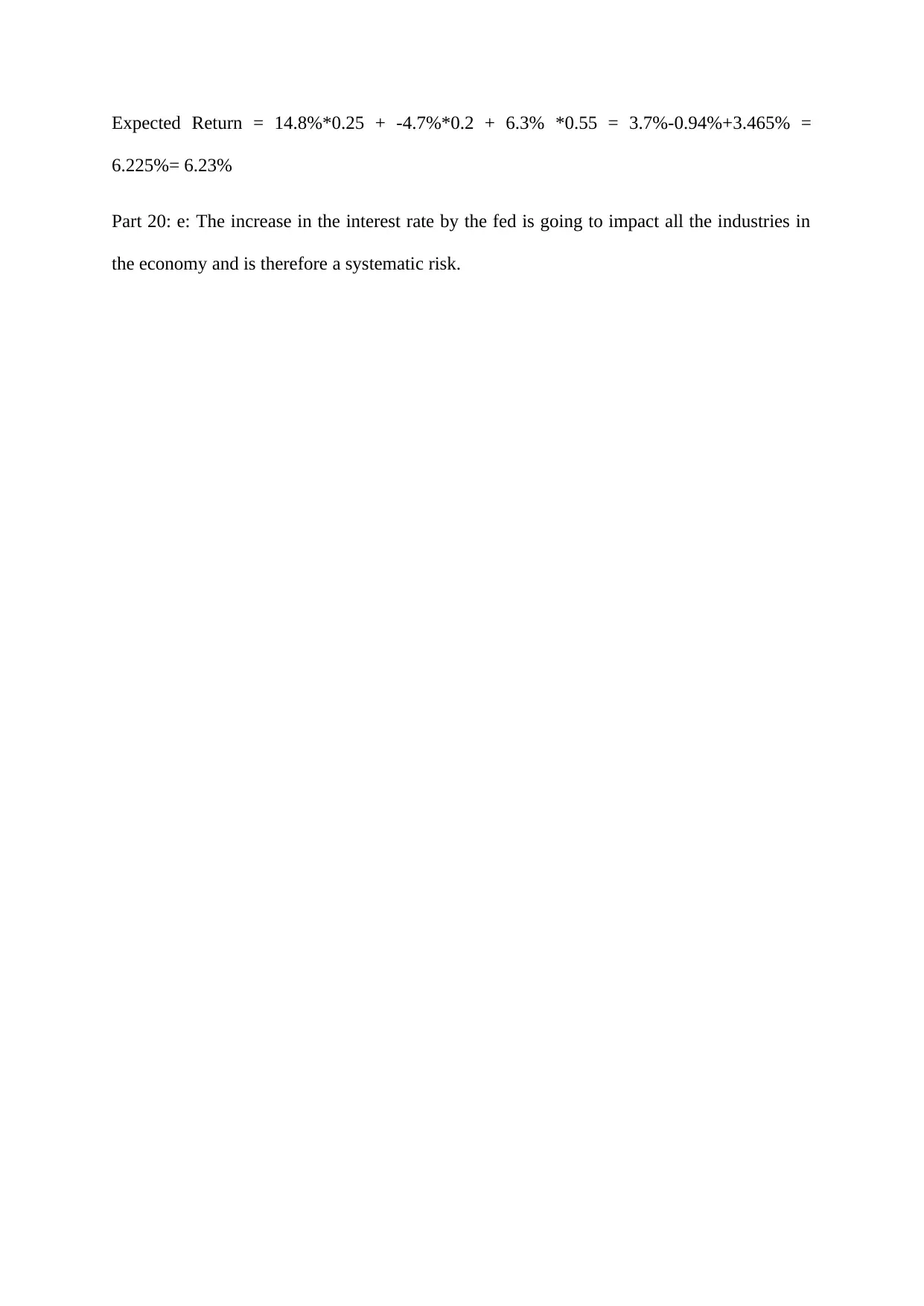
![[object Object]](/_next/static/media/star-bottom.7253800d.svg)